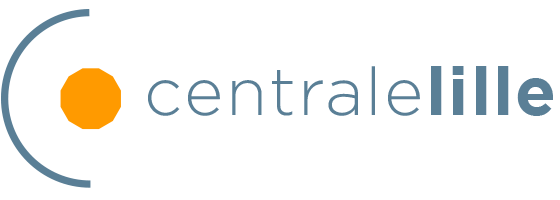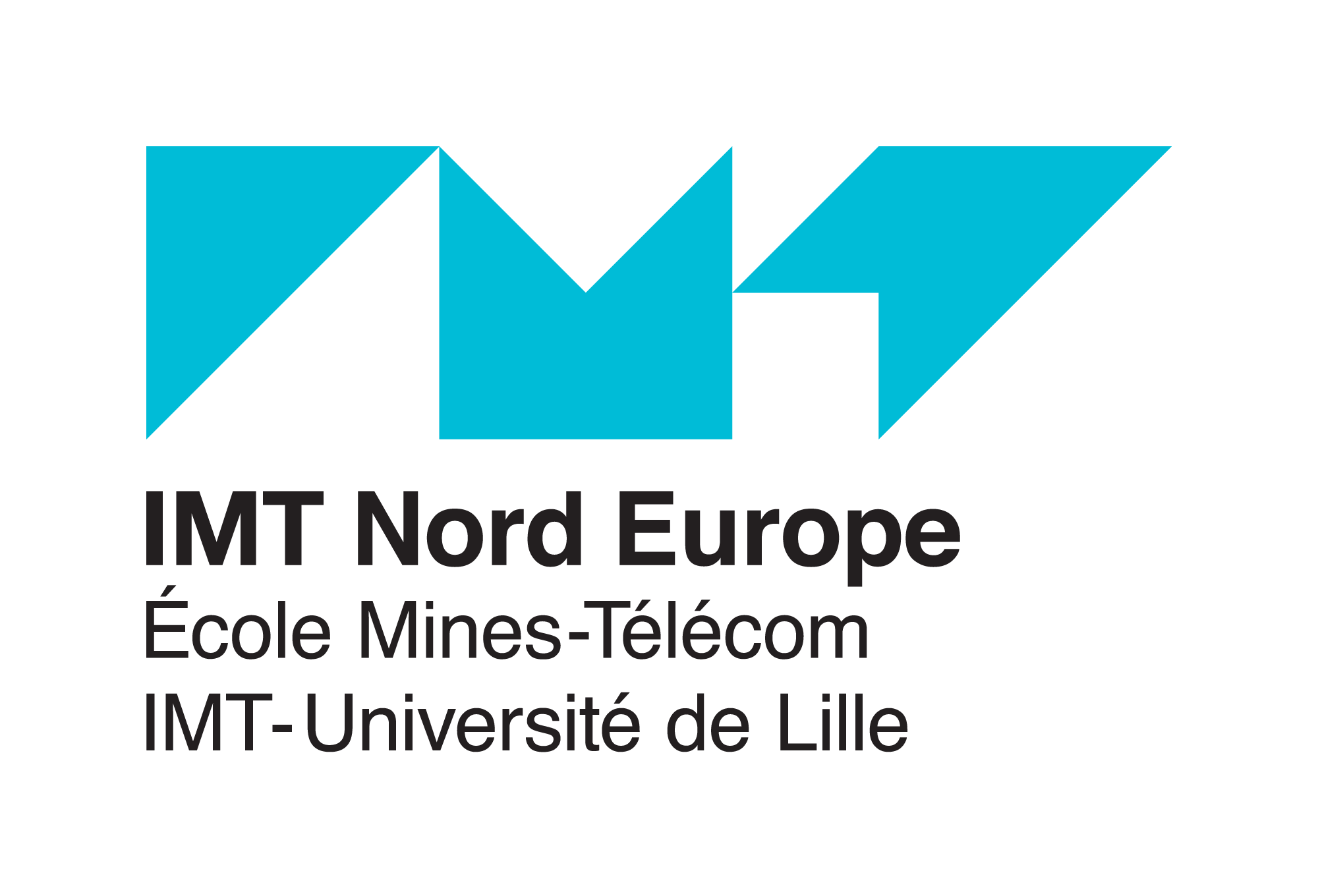-
Digital World and Robotics
Research center in Computer Science, Signal and Automatic Control (CRIStAL)
Research unit - UMR 9189
Our research addresses major scientific and societal issues such as: BigData, software, image and its uses, human-computer interaction, robotics, control and supervision of large systems, intelligent embedded systems, bioinformatics... with applications in the commercial, health technology, smart grid sectors among others. We are recognized by original contributions, achievements (hardware and software) and multidisciplinary collaborations in the field of Human and Social Sciences, as well as in the field of interactions of digital sciences with biology, mathematics and engineering sciences. The research is carried out within thirty three research teams divided into 9 thematic groups: Control and Scientific Computing (CO2); Data Intelligence (DatInG); Software Engineering (GL); Interactions and Collective Intelligence (I2C); Image; Modeling for Life Sciences (MSV); OPTImization: Models and Applications (OPTIMA); Secure and Adaptive Embedded Systems (SEAS); Tolerance Prognostic System of Systems (ToPSyS). We are open to academic and industrial collaborations and propose training and services in line with our expertise.
-
Myriam Caudrelier
Contact
Bâtiment ESPRIT, Avenue Henri Poincaré
Campus Cité Scientifique, Université de Lille
59655 VILLENEUVE D'ASCQ
https://www.cristal.univ-lille.fr/

Effectif
Effectif total : 459
Personnel de recherche : 216
Personnel d'appui à la recherche : 34
Skills
• Modeling, analysis, control and monitoring of multi-physical systems
• Formal methods for the design and operation of discrete event systems
• Computer algebra, high performance computing, geometry and algebra
• Deformable robots
• Robust estimation and control for dynamic systems with high complexity
• Digital differentiation
• Linked data
• Data base
• Methods and models of machine learning within information networks
• Machine learning - machine learning, sequential decision in the uncertain
• Statistical signal processing and modeling
• Bayesian inference
• Theory of belief functions
• Polarimetric imaging
• Information security
• Software modeling and its relationship with users
• Software creation and maintenance, software production control
• Remodularization of object-oriented applications
• Brain-computer interface, Human-Machine
• Tactile and gestural interaction
• Computer-assisted human interactions
• Multi-agent systems
• Tools and methods to analyze the shapes of static and dynamic 3D objects
• Detection, tracking and recognition of objects and people
• Automatic image analysis methods
• Modeling and simulation of bio-molecular systems
• Analysis of biological sequences
• Optimization algorithms and applications
• Knowledge extraction
• Adaptive and Secure Embedded Systems
• Joint software and hardware design
• Operating systems architecture
• Computational music analysis
• Extended Reality and Virtual Reality
• Software for Extended Reality and Advanced Interactions
• 3D scanning
• Annotative interface
• Museum mediation
• Data visualization
Example(s) of projects
• Ikonikat 3D: Design of a tool allowing the virtual designation on sculpture, thanks to the augmented drawing 🡭
• RMapViewer: a tool for chemists to visualize and analyze chemical reaction maps 🡭
• «The Open Reality Experience» (TORE): innovative device of virtual reality of completely original conception, unique in the world, the screen is curved in all its dimensions and devoid of edges 🡭
• Soft robots: design of silicone or plastic robots for medical applications such as minimally invasive surgery 🡭
• VASCO (supervised automated vehicle for containers): development of the first 100% automated system with infrastructure-free guidance for container transport in port terminals 🡭
• AI Song Contest, international competition dedicated to music composed using artificial intelligence -3rd place in the competition out of 38 teams 🡭
Example(s) of publications
• Hafiz Ahmed, Rosane Ushirobira, Denis Efimov, Damien Tran, Mohamedou Sow, et al.. A fault detection method for an automatic detection of spawning in oysters. IEEE Transactions on Control Systems Technology, Institute of Electrical and Electronics Engineers, 2016, 24 (3), pp.1140--1147. ⟨10.1109/TCST.2015.2472999⟩ 🡭
• Rémi Bardenet, Arnaud Doucet, Chris Holmes. On Markov chain Monte Carlo methods for tall data. Journal of Machine Learning Research, Microtome Publishing, 2017. 🡭
• Adel Noureddine, Romain Rouvoy, Lionel Seinturier. Monitoring Energy Hotspots in Software. Journal of Automated Software Engineering, Springer, 2015, 22, pp.291-332. ⟨10.1007/s10515-014-0171-1⟩ 🡭
• Alix Goguey, Daniel Vogel, Fanny Chevalier, Thomas Pietrzak, Nicolas Roussel, et al.. Leveraging finger identification to integrate multi-touch command selection and parameter manipulation. International Journal of Human-Computer Studies, Elsevier, 2017, 99, pp.21-36. ⟨10.1016/j.ijhcs.2016.11.002⟩ 🡭
• Pierre Pericard, Yoann Dufresne, Loïc Couderc, Samuel Blanquart, Hélène Touzet. MATAM: reconstruction of phylogenetic marker genes from short sequencing reads in metagenomes. Bioinformatics, Oxford University Press (OUP), 2017, 34 (4), pp.585-591. ⟨10.1093/bioinformatics/btx644⟩ 🡭
• Blot, A., Kessaci, MÉ. & Jourdan, L. Survey and unification of local search techniques in metaheuristics for multi-objective combinatorial optimisation. J Heuristics 24, 853–877 (2018). https://doi.org/10.1007/s10732-018-9381-1 🡭
• Narjes Jomaa, David Nowak, Gilles Grimaud, Samuel Hym. Formal proof of dynamic memory isolation based on MMU. Science of Computer Programming, Elsevier, 2018, 162, pp.76-92. ⟨10.1016/j.scico.2017.06.012⟩. 🡭
• Mathieu Giraud, Sławek Staworko. Modeling Musical Structure with Parametric Grammars. Mathematics and Computation in Music (MCM 2015), Jun 2015, London, United Kingdom. pp.85-96, ⟨10.1007/978-3-319-20603-5_8⟩. 🡭
Discover the full list of publications here.
Collaborations/Partners/Scientific clients
National:
LIRSA, CNAM Paris, ICUBE, STRASBOURG, liris lyon, LIP6, LIRM, LS2N Nantes, Université de Rennes, Université de Polynésie Française, INRIA Lorraine LORIA, Université Grenoble Alpes, Maison de la simulation de Saclay, Université de Versailles-Paris Saclay, Sorbonne Université, Université de Cergy (LPPI EA2528), Inserm Paris (UMR-S1159), Inria/CNRS I-Cube Strasbourg, Inria/Irisa Rennes, Cirad, Inria Rennes, Inria Saclay Parietal, Université Paris-Dauphine, Université de Troyes, Université de Rouen (CETAPS, LITIS), Institut de Recherche en Informatique de Toulouse (IRIT), GIPSA-Lab, AstroParticule & Cosmologie, Université Paris Diderot, ENS Paris, Observatoire de Paris Meudon, IRAM Grenoble, Ecole Polytechnique, Université Paris-Saclay, LPICM, I3S, CRAN, S2N de l’Université de Nantes, ENS-Cachan, observatoire de la côte d’azur, université de Nanterre, Université de Marne-la-Vallée, Centrale Supelec, Institut du Cerveau et de la Moelle Epinière, UTC, Université Aix-Marseille, Inria Bordeaux, IPL AVATAR, Université de Poitiers, Inria Grenoble IRMES / INSEP, LIMOS, Université Clermont Ferrand, CIS à St Etienne, UTBM, IFFSTAR, ESIEE Paris, Onera Toulouse, CEA LIST, IRIT, IRT2, LTCI, L2SN, Institut de Neurosciences de la Timone, INRIA Nancy, UGE/IFSTTAR LEOST-COSYS - Institut des Sciences du Mouvement (ISM, UMR 7287 CNRS-AMU)
International:
Japanese-French Laboratory for Informatics (Japan), University of Kyoto (Japan), Université de Waterloo (Belgium), City University (Hong-Kong), University of Oxford (UK)
Collaborations/Partners/Private Clients
Applications sectors
- Science / Research
Services provided
• Formal methods for the design and operation of discrete event systems
• Robust estimation and control for dynamic systems with high complexity
• Digital differentiation
• Methods and models of machine learning within information networks
• Statistical signal processing and modeling
• Polarimetric imaging
• Software production control
• Software modeling and its relationship with users
• Software creation and maintenance
• Remodularization of object-oriented applications
• Tools and methods to analyze the shapes of static and dynamic 3D objects
• Detection, tracking and recognition of objects and people
• Automatic image analysis methods
• Modeling and simulation of bio-molecular systems
• Analysis of biological sequences
• Knowledge extraction
• Joint software and hardware design
• Computational music analysis
• Integrated Systems and Supervision Design
• Modeling, analysis, control and monitoring of multi-physical systems
• Design and operation of discrete event systems
• Computer algebra, high performance computing, geometry and algebra
• Software design in robotics
• Robust estimation and control for dynamic systems with high complexity
• Methods and models of machine learning within information networks
• Statistical signal processing and modeling
• Software production control
• Software modeling and its relationship with users
• Software creation and maintenance
• Analysis of the shapes of static and dynamic 3D objects
• Information system security assessment and audit services
• Study of material devices for Extended Reality
• Management and provision of Virtual Reality equipment
• Expertise in software development for Extended Reality and Advanced Interactions
• Support for 3D scanning
• Motion capture for robots or humans
• Experimentation, testing and validation of robotic systems
• 3D printing
• Site security equipment and tools
• Provision of a set of tools for the development of complex applications
• Provision of devOps tools and connectors on many libraries
Training offers
• Statistical methods, Artificial Intelligence.
• Training in software engineering (git, gitlab, continuous integration, ...)
• Software design, A MOOC under Creative Commons license http://mooc.pharo.org
• Training in mobile robotics and manipulation, access to the AIP S.mart
• Several books under Creative Commons license are available on http://books.pharo.org
Consulting services
• robots of the PRETIL platform (deformable robots, container carrier, autonomous vehicles, concrete 3D printing robot, medical robots for brachytherapy)
• virtual reality rooms and equipment at IRCICA
• PLBS bioinformatics in connection with the IFB
• computing mesocentre, GRID5000 and MESONET networks
• energy and fuel cell platform
• REVICA immersive auditorium (6mx3m touch screen, 6 video projectors, motion capture)
• showroom equipped with light visualization and interaction equipment
• photogrammetry and macro-photogrammetry laboratory
• experimentation room equipped with various devices (immersion helmets, table and touch screens, virtual treadmill, sound and light equipment, etc.)
Affiliated institutions / organisations
Partner institution(s)
Groups/Networks/Federations
Equipex/EquipEx+/ESR
Doctoral schools
Competitive cluster
Regional strategic areas of activity
- Digital World and Robotics
- Artificial intelligence, image processing, data science
- Cybersecurity and digital trust
- Digital frugality
- Digital modeling, digital twins, data visualization
- Digital transformation, digital social inclusion
- Electronics
- Engineering, software design, open source software
- Internet of things, cloud computing and big data
- Robotics, cobotics, Human-Machine interaction
- Telecom, networks, photonics









